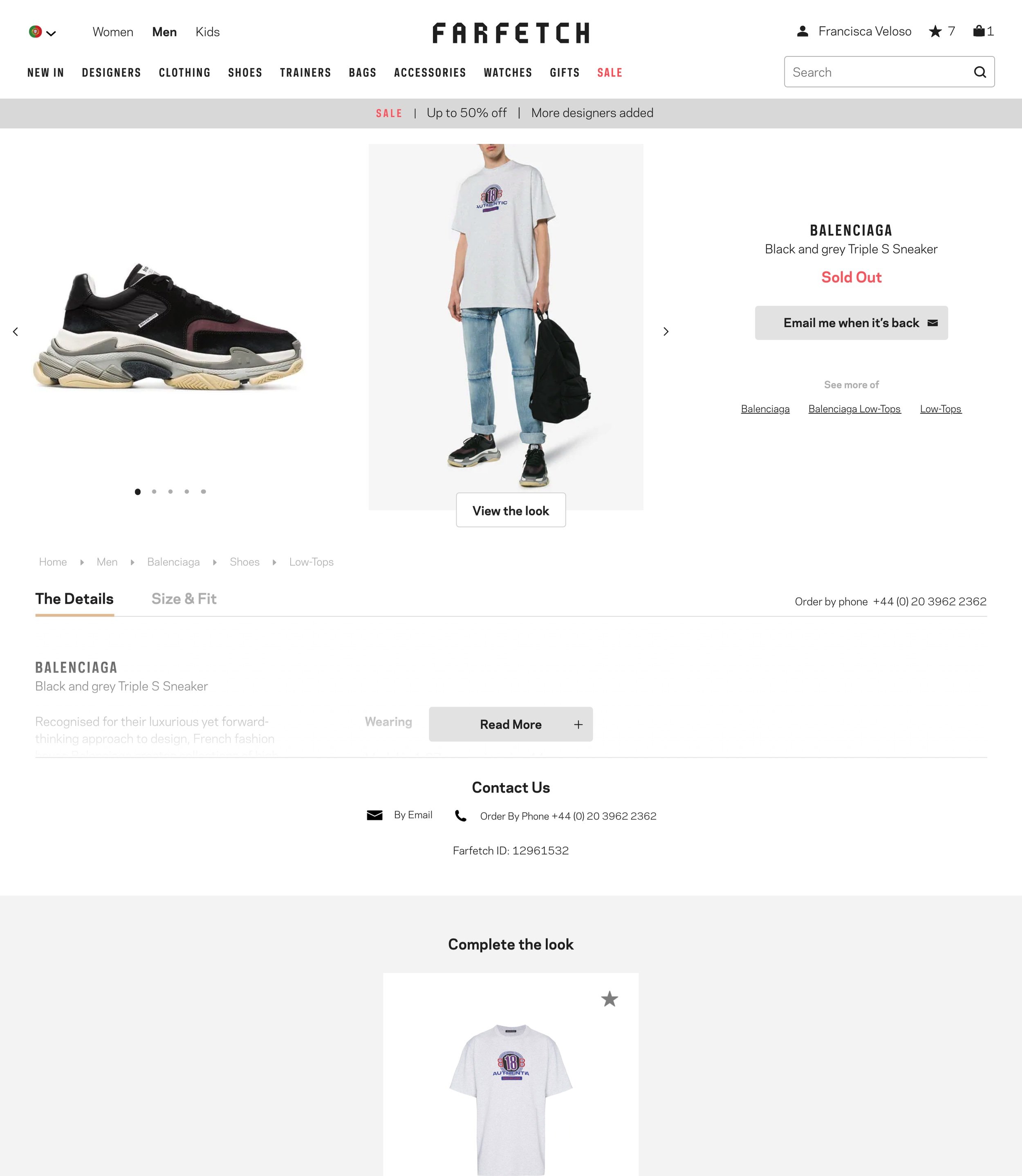Turning a Dead-End into an Opportunity.
Dead ends in e-commerce, like out-of-stock items, can become opportunities for discovery
Before becoming a Manager, I worked as a senior designer and then lead at Farfetch, focusing on Acquisition and Engagement. This project on Dead Ends is one of the initiatives I contributed to.
Problem: At Farfetch, 15% of landing product detail pages are for out-of-stock items, leading many users to abandon their session without exploring alternatives. This results in lost conversions and disengaged users, highlighting a gap in the offered experience and missed conversion opportunities. Furthermore, Out of Stock pages look very similar to In-Stock Pages.
Hypothesis: Turning these Out-of-Stock dead-end moments into opportunities for engagement, discovery, and inspiration. A measurable impact would include reduced abandonment rate and churn rates after an Out-of-Stock page is visited, alongside increased time-on-site, as users are encouraged to explore and stay connected with the broader catalog.
Spending time in the Problem Space
Mapping the problem and current experience
After aligning on metrics and mapping the problem with the PM (image above), I asked the team to discuss the page from a first-time user’s perspective, capturing feedback on post-its during the review. We also consulted Customer Support for their insights and role-played as luxury associates informing users about out-of-stock items. These activities helped uncover key jobs-to-be-done for the next steps.
Confirm product identity - Help users quickly verify they've found their desired item, not to be confused with in-stock pages.
Communicate availability status clearly - Provide immediate, unambiguous out-of-stock messaging
Smart alternative suggestions - Present relevant options that match original specifications (color, style, size)
Jobs-to-be-done
Design and Hypothesis Testing
The first step is clear: ensuring users recognize the product they were searching for. Once that’s achieved, we can focus on opportunities. Think of it as a shopping assistant saying, "We don’t have this… but let me help!"
To explore this, we selected a few algorithms and A/B tested the least confident option:
Same product, different model or color: Not tested, as we were confident in its relevance when available.
Same brand + same category (e.g., More Mules from Burberry).
Similar pieces (e.g., Other Mules).
The goal is to deliver an experience that flows from relevance to discoverability—starting with what’s most likely to match the user’s intent and transitioning to broader options. For instance, it’s easier to infer someone wants a similar shoe than to guess they’re looking for a pink one without explicit data.
Proven Impact and Results
The rollout of smart recommendations for out-of-stock product detail pages (OOS PDPs) significantly improved user engagement and conversion metrics:
Single Page Visits: Users encountering out-of-stock items were more likely to explore suggested alternatives, reducing drop-offs and increasing browsing behavior.
Add-to-Bag Actions & Revenue: A clear boost in Add-to-Bag actions contributed to a notable increase in GMV, backed by high-confidence testing results.
Performance of Recommendation Variants
Among the tested variants, Variant C proved most effective. By prioritizing recommendations for similar products over broader designer or category suggestions, it drove higher engagement rates and conversions:
Revenue Impact: The test drove an increase in GMV ranging from +$2.35M to +$6.76M, depending on the scenario, with a high statistical significance of 99.9%.
Continuous Refinement on Dead-Ends Epic
To further enhance the experience, my team and I iterated on related features:
a) Low PDP See Similar When stock is low or size is unavailable: show similar products (A/B test showcase on options on PDP vs. PLP)
b) Low Stock PLPs > Designers When catalog short on a product listing page showcase related Designers
c) Offering Relevant Notifications: Back in Stock Flow on iOS with Push Notifications








